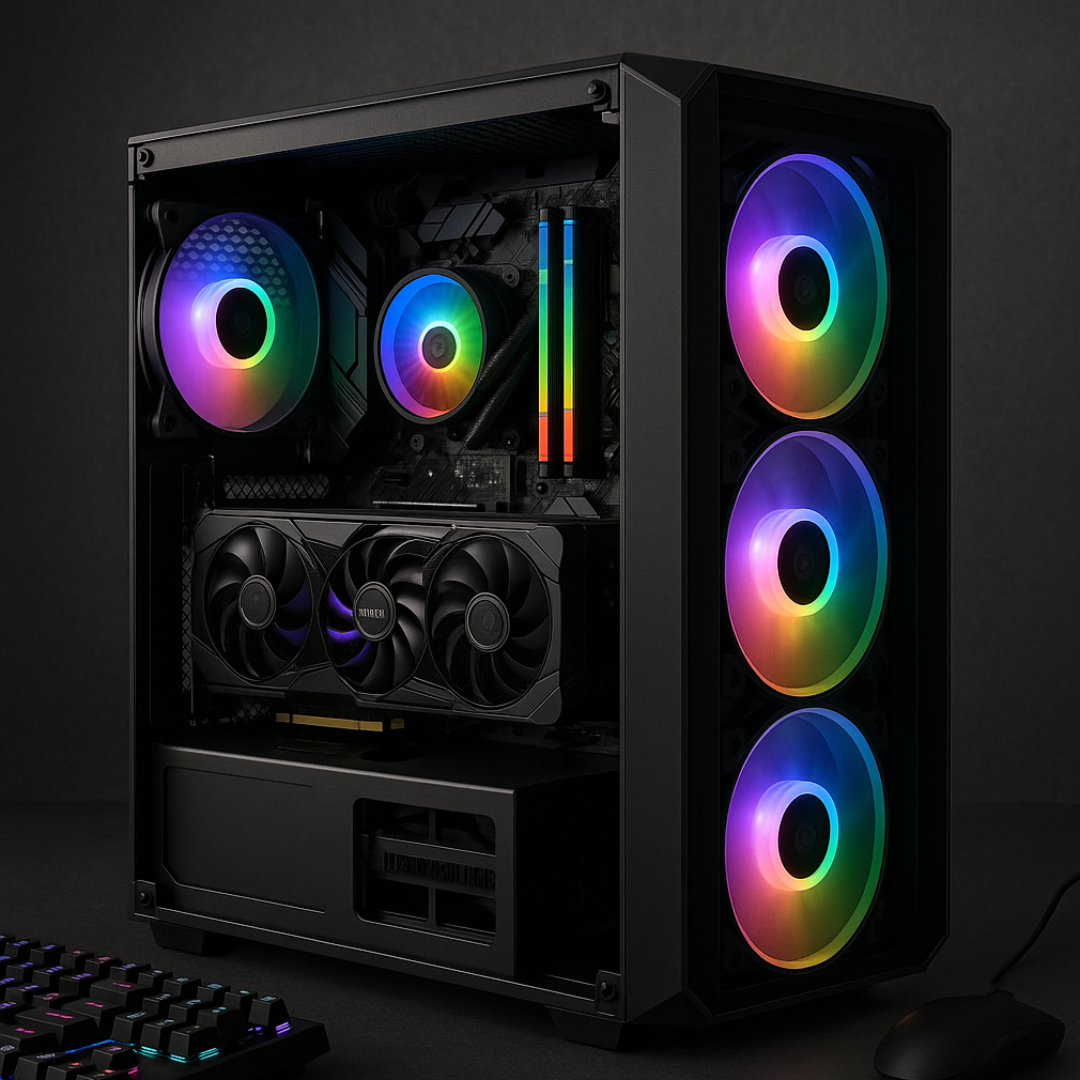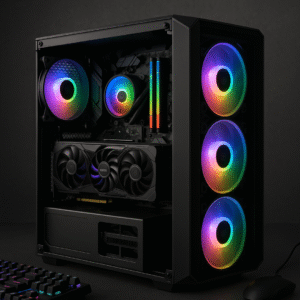Building Your First Gaming PC in 2025: What You Actually Need
Building Your First Gaming PC in 2025
🧩 Optimal Part Selections by Budget
Based on Tom’s Hardware and PC Gamer recommendations:
| Tier | CPU | GPU | Other Specs | Use Case |
|---|---|---|---|---|
| Budget (~$800–900) | Intel Core i5‑14600KF ( |
GeForce RTX 5060 or Radeon RX 7600 | 16 GB DDR4/DDR5, 1 TB NVMe SSD, B660/B650 mobo, 650 W PSU | Smooth 1080p gaming at high settings |
| Mid‑Range (~$1,200) | Ryzen 7 7800X3D or i5‑14600KF + upgrade | RTX 5070 Ti or RTX 5060 Ti | 32 GB RAM, PCIe 4 SSD, quality air/AIO cooler | 1440p gaming, streaming, multitasking |
| High‑End ($1,600–2,000+) | Ryzen 9 7800X3D or 9950X3D | RTX 5080 / RX 9070 XT | 32 GB DDR5-6000+, 2 TB NVMe, 850 W PSU, liquid cooling | 1440p/4K @ ultra-settings, future-proofing |
🧠 Why These Parts Work
-
CPUs
-
Ryzen 7 7800X3D shines in gaming due to its extra cache
-
i5‑14600KF balances cost and performance for most gamers
-
-
GPUs
-
RTX 5060/5060 Ti: excellent 1080p/1440p options with DLSS 4 & Blackwell cores
-
-
Memory & Storage
-
16 GB RAM is minimum—upgrade to 32 GB for higher tiers.
-
Recommend NVMe SSDs (1 TB or more) for fast load times and responsiveness.
-
🧰 Step‑by‑Step Assembly
-
Prepare workspace, wear an anti-static wrist strap.
-
Install CPU, cooler, and RAM onto motherboard.
-
Mount motherboard into the case and connect PSU.
-
Install NVMe SSD on the board.
-
Insert GPU, plug front panel headers.
-
Perform cable management.
-
Boot up, check BIOS, enable XMP/DOCP, install Windows & drivers
💡 Pro Tips & Tools
-
Use PCPartPicker to ensure compatibility and streamline building
-
Look out for regional bundles like Ryzen 7800X3D + motherboard + RAM at $499 (Micro Center)
-
Prioritize a quality PSU (80+ Gold, 650–850 W) and proper cooling to maintain longevity.
✅ Final Thoughts
-
Establish your budget and pick CPU+GPU accordingly—these dominate performance.
-
Ensure future-proofing by choosing DDR5-capable motherboards and PSUs with headroom.
-
Invest in tools and learning, and use guides like PCPartPicker and Tom’s Hardware as your roadmap.
Want me to build a customized parts list for your budget or recommend where to buy in India? Just say the word!

